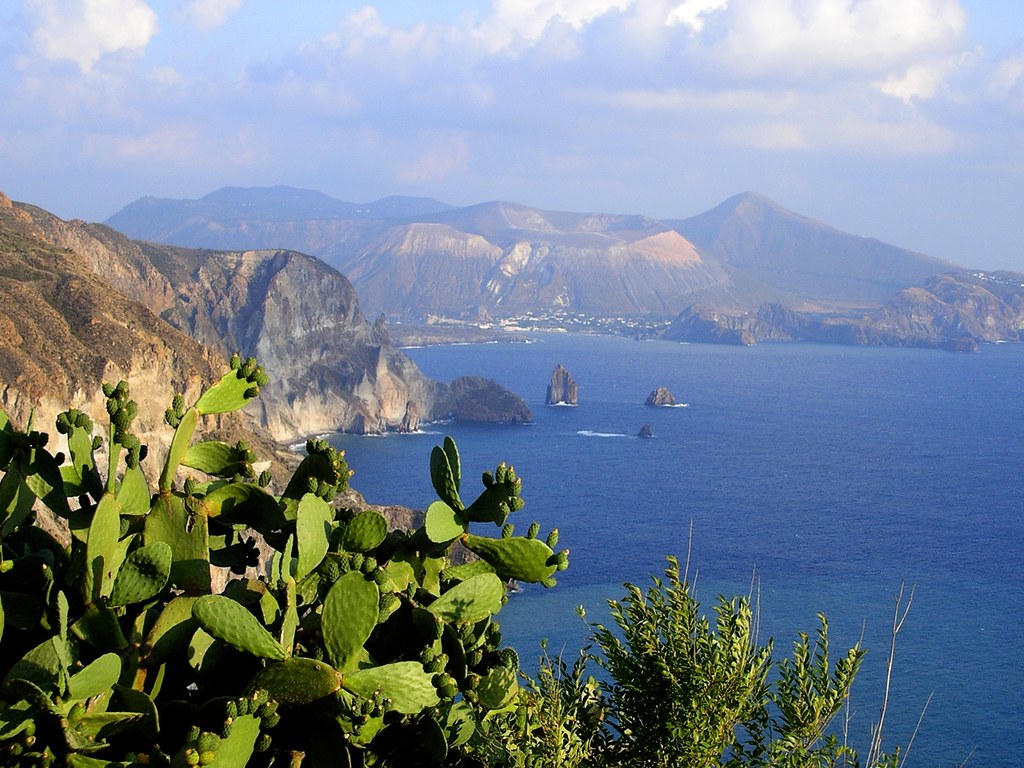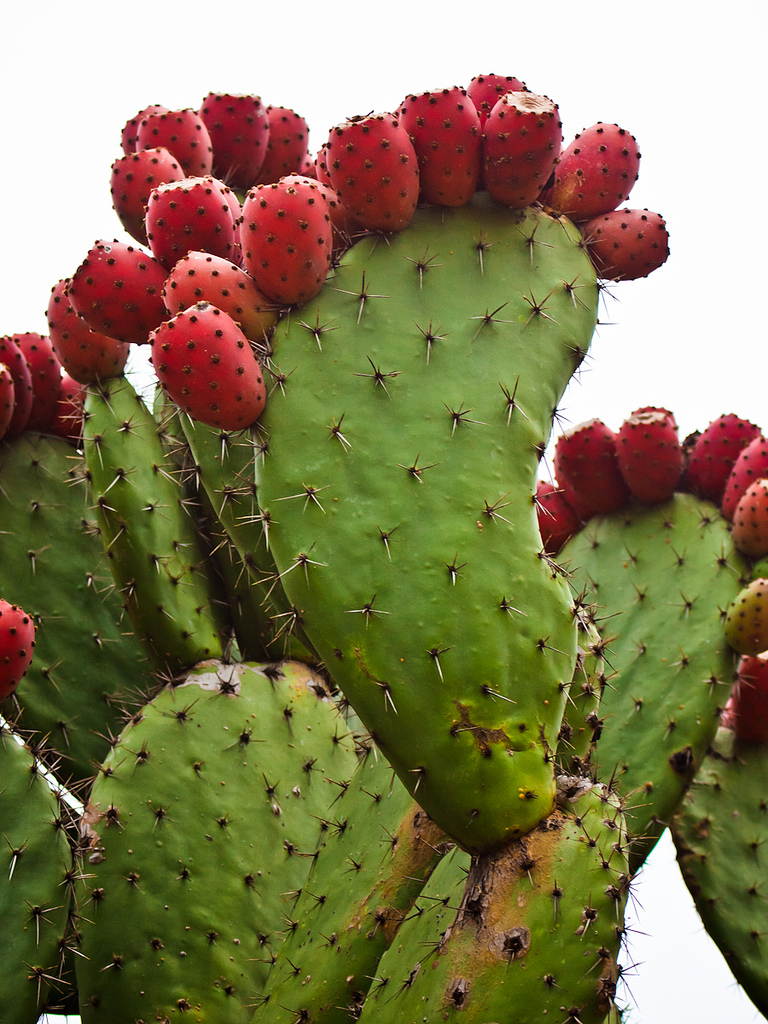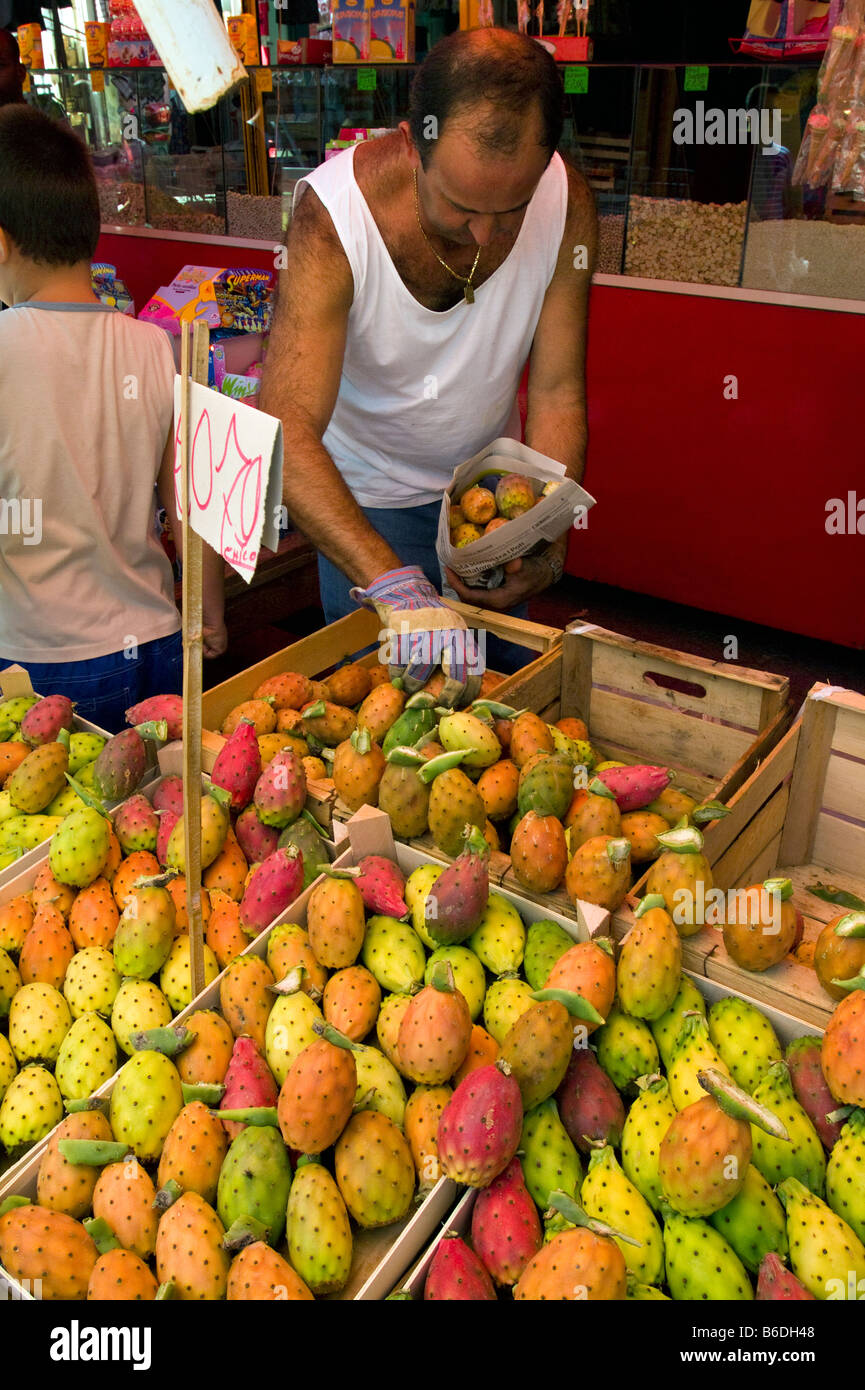Cactus "Nopal" is native to Mexico.
If cactus is the next food trend, we're all chasing Mexico and Italy
With its sharp spine and intimidating name, prickly pear cactus is not a common ingredient in the U.S. But maybe it should be.
Nopalitos, which are the cactus paddles, and tunas, which are the pears from the cactus, are really popular in Mexico. And other countries aren't far behind. Ethiopia, Morocco, South Africa, Peru, Argentina and Chile all have significant acreage devoted to nopales, according to the United Nations. Southern Italians are mad for cactus fruit -- Sicilians have grown them for years. They are second only to Mexico in cactus fruit production.
PJ: Who is growing them?
SB: I found a couple of places, both of which are out in California, that are growing nopalitos and tunas, or the fruits. Most of the actual agricultural production is obviously in Mexico, but a few places are cropping up in the states. One of those places is D'Arrigo Bros. farms; they put out cactus pears under the Andy Boy brand. They have a dedicated 350 acres of just cactus, which makes them by far the largest cactus farm for food production in the U.S.
PJ: That is huge. Where does the last name come from? It doesn't sound Mexican.
SB: From my understanding, from what they told me, it's actually an Italian name. Most of their customers are still Italian immigrants because -- I didn't realize this at all -- but Italians, especially in Sicily and southern Italy, love eating the cactus fruit. Mexico, according to the United Nations, is by far the largest producer, but No. 2 is Italy.
Fichi d'India siciliani pronti per la distribuzione commerciale
fico d'india (luigi provenzano) Tags: sea landscape mediterranean mediterraneo ficodindia mare
Opuntia ficus-indica is a species of cactus that has long been a domesticated crop plant important in agricultural economies throughout arid and semiarid parts of the world. It is native to Mexico . Some of the common English names for the plant and its fruit are Indian fig opuntia, Barbary fig, cactus pear, spineless cactus, and prickly pear, although this last name has also been applied to other less common Opuntia species. In Mexican Spanish, the plant is called nopal, while the fruit is called tuna, which are names also used in American English, especially as culinary terms.

Fig opuntia is grown primarily as a fruit crop, but also for the vegetable nopales and other uses. Most culinary references to the "prickly pear" are referring to this species. The name "tuna" is also used for the fruit of this cactus, and for Opuntia in general; according to Alexander von Humboldt.
Cacti are good crops for dry areas because they efficiently convert water into biomass. O. ficus-indica, as the most widespread of the long-domesticated cactuses, is as economically important as maize and blue agave in Mexico today. Because Opuntia species hybridize easily (much like oaks), the wild origin of O. ficus-indica is likely to have been in Mexico due to the fact that its close genetic relatives are found in central Mexico.[3]
Jams and jellies are produced from the fruit, which resemble strawberries and figs in color and flavor. Mexicans have used Opuntia for thousands of years to make an alcoholic drink called colonche.
In Sicily, a prickly pear-flavored liqueur called "Ficodi" is produced, flavored somewhat like a medicinal/aperitif. In Malta, a liqueur called bajtra (the Maltese name for prickly pear) is made from this fruit, which can be found growing wild in most every field. On the island of Saint Helena, the prickly pear also gives its name to locally distilled liqueur, Tungi Spirit.
Mexican and other southwestern residents eat the young cactus pads (nopales, plural, nopal, singular), usually picked before the spines harden. They are sliced into strips, skinned or unskinned, and fried with eggs and jalapeños, served as a breakfast treat. They have a texture and flavor like string beans.
They can be boiled, used raw blended with fruit juice, cooked on a frying pan, and often used as a side dish to go with chicken or added to tacos along with chopped onion and cilantro.
Fodder
The cattle industry of the Southwest United States has begun to cultivate O. ficus-indica as a fresh source of feed for cattle.[7] The cactus is grown both as a feed source and a boundary fence. Cattle avoid the sharp spines of the cactus and do not stray from an area enclosed by it. The cactus pads are low in dry matter and crude protein, but useful as a supplement in drought conditions. In addition to the food value, the moisture content adequately eliminates watering the cattle and the human effort in achieving that chore.
Soil erosion prevention
Opuntia ficus-indica are planted in hedges to provide a cheap but effective erosion control in the Mediterranean basin. Under those hedges and adjacent areas soil physical properties, nitrogen and organic matter are considerably improved. Structural stability of the soil is enhanced, runoff and erosion are reduced, while water storage capacity and permeability is enhanced.[8] Prickly pear plantations also have a positive impact on plant growth of other species by improving severe environmental conditions which facilitate colonization and development of herbaceous species.
Opuntia ficus-indica is being advantageously used in Tunisia and Algeria to slow and direct sand movement and enhance the restoration of vegetative cover, minimizing deterioration of built terraces with its deep and strong rooting system.
Other use
Another use of the plant is as an ingredient in adobe to bind and waterproof roofs.
O. ficus-indica (as well as other species in Opuntia and Nopalea) is cultivated in nopalries to serve as a host plant for cochineal insects, which produce desirable red and purple dyes, a practice dating to the pre-Columbian era.
Distribution
The most commercially valuable use for Opuntia ficus-indica today is for the large, sweet fruits, called tunas. Areas with significant tuna-growing cultivation include Mexico, the Mediterranean Basin, Middle East and northern Africa.The cactus grows wild and cultivated to heights of 12–16 ft (4–5 m). In Namibia, O. ficus-indica is a common drought-resistant fodder plant.
The prickly pear (Opuntia indica or cactus ficus indica) is a famous fig cactus. Growing on the island Fuerteventura in Spain
Cycladic house with potted cactus pear (Opuntia ficus-indica) in Santorini, Greece
Prickly pear (Opuntia ficus-indica) with fruit, Tabernas Desert, Almeria,Spain

Market trader selling 'prickly pear cactus fruit', Palermo, Sicily, Italy -
The coat of arms of Mexico depicts a Mexican golden eagle, perched upon an Opuntia cactus, holding a rattlesnake.









